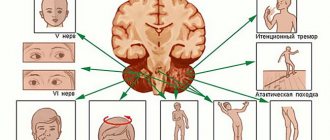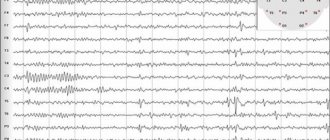Over the past few years, local therapists have encountered patients who present a large number of confusing, unclear, vague complaints. Most often it is shortness of breath, pain in the back, heart, and abdomen. All complaints change quickly and do not fit into any picture of any specific disease. In search of an accurate diagnosis, patients go to different specialists, receive appointments from a gynecologist, surgeon, gastroenterologist, etc.
None of the diagnoses made is subsequently confirmed. However, patients insist on new additional diagnostic methods and treatment. Some doctors are even beginning to doubt their veracity. At the same time, these patients are really sick. Behind all somatic symptoms there are mental disorders. In medical practice, this condition is known as somatoform disorder. It is interpreted as a disease that has in its clinical picture a number of somatogenic symptoms that hide mental disorders behind them, while no organic manifestations are detected.
Psychosomatic or somatoform disorder is a disease that occurs quite often, their prevalence ranges from 0.1 to 0.5% of the total population of the Earth, on average 280 cases out of 1000. According to WHO, 25% currently suffer from such diseases patients seen by doctors. Women are most susceptible to these disorders. Despite the fact that this disease is typical of the adult population, somatoform disorder can also be diagnosed in children, starting from primary school age.
Signs of somatoform personality disorder
The main symptom of the disease is the patient’s demands for a full examination due to physical suffering that is not confirmed by clinical results. In some cases, the examination reveals minor deviations that confirm the symptoms, but they do not explain the strength of their manifestation and the resistance of the disease to the use of drugs.
In addition, there are the following symptoms:
- irritability;
- anxiety;
- dissatisfaction;
- hysterical behavior due to exhaustion of the autonomic nervous system;
- feeling of tension;
- are constantly in search of a “good doctor”;
- exacerbations are provoked by experienced stressful situations, and not by weather changes.
Revealing
It is about such complaints that the patient goes to the doctor, most often a therapist or neurologist. Experienced doctors usually identify somatoform disorder during consultation. Sometimes doctors need additional examinations that show the norm, which confirms the diagnosis.
Such a patient is referred to a psychotherapist or psychiatrist. Very often the patient denies the neuropsychic origin of his complaints and even resists attempts to discuss this cause. Therefore, the doctor (and the patient’s loved ones) should be patient in persuasion.
In practice, unfortunately, such patients will change several doctors, undergo many tests (all studies will show the norm) before they get to a specialist who can help them!
Causes of somatomorphic disorder
In medical practice, it is customary to distinguish three groups of factors that have a direct impact on the development of the disease.
Hereditary-constitutional. This group includes characteristics of the central nervous system and personal qualities, manifested in the form of traits such as lack of courage and increased exhaustion. The risk zone includes: “hypochondriac type”, “born pessimists”.
Psycho-emotional factors. These include a group of external stimuli that have a certain significance. Based on the nature of the impact, the following are distinguished:
- Acute, unexpected super-relevant and irrelevant factors.
- Situational, personality-involving, unforeseen factors. Usually they are associated with the loss of former prestige.
- Prolonged situational, characterized by depletion of the autonomic nervous system. They are caused either by excessive demands of the situation, or by inflated claims on the part of the individual.
- Prolonged situational, changing conditions over many years - “family idol”.
External factors are classified according to the scale of impact:
- microsocial (in a nervous situation in the family);
- cultural and ethnic.
Organic factors. These include forms of the disease caused by infections, intoxications, injuries, and hypoxia.
Causes
The causes of somatoform disorders are considered in the following approaches:
- Genetic. The pathology occurs in 30% of identical twins.
- Biological. The likelihood of somatoform disorder increases if the level of cortisol, one of the stress hormones, increases in the morning. There is a relationship between SR and insufficient functioning of the dominant hemisphere.
- Social. SR can occur if parents raise a child in an overprotective manner: they are overly concerned about the health and environment of their children, and do not allow them to show initiative and independence.
- Personal. SR suffers from people with alexithymia - the inability to correctly describe and label their own emotions, the inability to understand internal experiences.
- Integrative. V. Rif introduced the concept of “pathological circle”: first, the patient experiences unpleasant sensations, then he concentrates his attention on them and evaluates them as a disease.
Types of psychosomatic personality disorders
Psychosomatic disorders, according to the International Classification of Diseases - 10, include the following disorders:
- somatized;
- hypochondriacal;
- somatoform autonomic dysfunction (pathology of the autonomic nervous system (ANS);
- chronic somatoform pain personality disorder;
- undifferentiated psychosomatic disorder.
Somatization disorder
The development of this type of disease is indicated by the following symptoms:
- discomfort spreading over the skin throughout the body;
- failures in coordination of movements;
- periodic disturbances in the functioning of the senses;
- changes in sensitivity;
- motor dysfunction (paresis, paralysis).
In addition to the listed signs, there may be complaints about problems in the functioning of the main body systems: shortness of breath, chest pain. Characteristic symptoms of the disease from the gastrointestinal tract are: flatulence, nausea, pain in the abdomen, loose stools, and feelings of fullness in the abdomen. There may be complaints of frequent urination, discomfort in the genital area, and in women heavy vaginal discharge. Despite their presence, mental disorders are responsible for their manifestations.
When describing symptoms, patients describe their feelings to the smallest detail, often exaggerating. Thus, abdominal pain is compared to the feeling of an inflated ball in the stomach. This type of disorder most often manifests itself as a response to stress and exhaustion of the autonomic nervous system. Over time, a psychosomatic pain disorder of a chronic type develops.
Psychosomatic dysfunction of the autonomic nervous system
The characteristic features of this ANS dysfunction are the manifestation of such autonomic reactions as changes in heart rate, skin color, tremors of the limbs, and increased sweating. In addition to them, with this dysfunction of the autonomic nervous system the following symptoms are possible:
- cough;
- a persistent feeling of persistent fatigue;
- changes in the frequency of defecation and urination;
- flatulence;
- pain that occurs without a reason.
Usually their appearance is associated with some exact disease of the system, which is not confirmed by a medical examination, since they hide mental illnesses. The reasons for the development may be hidden both in personality characteristics and in the anxiety experienced. It is interesting that literally 10 years ago people with similar symptoms were diagnosed with “vegetative-vascular dystonia”.
Chronic somatoform pain disorder
With the development of this disease, there are complaints of intense, painful, persistent pain, which cannot be associated with a malfunction of any organ. In this case, other symptoms are completely absent. According to patients, pain appears without reason. People themselves explain their occurrence by the presence of problems with a certain part of the body or organ: the heart, the stomach. Somatoform pain disorder may last for 6 months or more.
Hypochondriacal disorder
This type of disease is characterized by a person’s confidence in the development of a serious and fatal illness: sarcoma, severe coronary artery disease, etc. If the patient complains of chest pain, then he is sure that he has serious heart disease, if the symptoms concern the digestive system, then they are associated with malignant formations of the gastrointestinal tract. Against the background of these fears, the development of phobias is possible, which are closely related to existing complaints. The combination of unconfirmed fears about personal health and bad mood are manifestations of hypochondriacal depression.
Undifferentiated somatoform disorder
The presence of this disease is indicated by persistent various complaints that cannot be correlated with any disease. The symptoms of this pathology do not fit into the clinical picture of classic somatization disorder.
Stages of treatment
The most important stage in the treatment of a psychosomatic disorder is a full diagnosis, where the true cause of the formation of this type of disorder of nervous activity will be clarified.
To carry out a correct differential diagnosis, you will need to be examined by several doctors of related specializations, and first of all, a psychotherapist and a neurologist.
After a complete and accurate diagnosis has been established, a treatment regimen is individually selected, where first aid should be provided in the first stages.
It must be remembered that this condition is very difficult for the patient to tolerate and the symptoms should be eliminated as quickly as possible.
In parallel, the main neurometabolic active treatment begins, which is preferably carried out according to the scheme of hospital-replacing techniques in outpatient care. Only in the most severe cases is a hospital recommended, only if the human body is in an extremely depleted state.
After stabilization of the condition, rehabilitation and recovery measures are required, when psychotherapy and special methods of restorative medicine are involved.
Psychosomatic disorder
A psychosomatic disorder is often confused with a somatic pathology and a person finds himself in a forced “vicious circle” of visiting different doctors, examinations, and drinking mountains of unnecessary and, often very harmful to his health, pills.
And this circle can be so strong and vicious that it even leads to serious surgical intervention; people lose healthy organs or body parts completely in vain, and the problem gets worse and worse. There are other organs that begin to “sick” in the same way.
This continues until either a competent doctor is found who will refer him to a psychotherapist, or the person accidentally receives the necessary information about his condition and comes to see the only necessary doctor in these cases.
In severe cases of manifestation of a psychosomatic disorder, a person does not distinguish any changes in his mental state, since all his attention is aimed at combating the symptoms and, unfortunately, not only the patient himself, but also doctors often try to deal with the symptoms, forgetting about the main thing - that you need to fight the cause, and the symptoms, in the absence of a cause, will go away on their own.
Psychosomatic symptoms can have a wide variety of directions. From headaches to heel pain. No organ can be protected from possible manifestations of a psychosomatic disorder. And that is why it is so important not to miss this condition of the nervous system, otherwise treatment will be pointless, and the underlying disease will continue to develop.
Frequent complaints in psychosomatic disorders
- Heart pain, palpitations, chest pain, chest pain.
- Psychosomatic disorders.
- Muscle pain, muscle pain, muscle torsion, muscle pull.
- Lower back pain, heaviness in the lower back or pain and heaviness in the back.
- Headaches of various types and intensity.
- Heaviness in the body, heaviness in the limbs.
- Feelings of heat or chills. Attacks or “hot flashes” of heat, chills.
- Feeling of a lump in the throat, difficulty swallowing, choking.
- Nausea, stomach pain, gastrointestinal disorders, abdominal pain.
- Feeling of weakness, feeling of emptiness, fatigue.
- Dizziness, feeling of powerlessness.
- Feeling of numbness and tingling in different parts of the body.
Manifestations
Psychosomatics reflects the processes of dysfunction of higher nervous activity and transformed into bodily (somatic) sensations, which manifest themselves in the form of symptoms of various diseases of individual organs or tissues.
Soma - Body, torso. The totality of all cells of the body, with the exception of reproductive cells.
Somatic diseases are diseases of internal organs.
Somatic sphere - Bodily sphere.
Somatization – Pathomorphosis (or Nosomorphosis, this is a change in the signs of a disease, a change in morbidity) of some mental disorders, in which vegetative disorders predominate over psychopathological ones. The occurrence of diseases of internal organs as a result of mental conflicts. The term “somatization” was introduced into medical practice as an alternative to the concept of “conversion”. Initially, somatization was understood as the transformation of intrapsychic psychological conflicts into true somatic diseases, and subsequently - a set of various psychopathological disorders with a predominance of somatovegetative components.
Somatization disorder - A mental disorder characterized by a multitude of repeated bodily complaints in the absence of disorders that explain these complaints or are adequate to them.
Psychosomatic symptoms are often accompanied by depression or increased anxiety, disrupt personal communication and family relationships, and lead to unnecessary treatment or surgery.
Syndromes of somatoform disorders
The structure of psychosomatic disorders includes a number of the following syndromes:
- Conversion syndromes. These conditions are characterized by deterioration or loss of any of the body's functions - blindness, tics, deafness, lack of sensation in the limbs.
- Asthenic conditions. They are distinguished by a set of the following symptoms: signs of physical illness, headaches, palpitations, decreased sexual desire, frequent urge to urinate. As for headaches, they intensify during mental stress and in the afternoon.
- Depressive syndromes. These disorders occur quite often. They are characterized by an anxious state and impaired performance. Doctors give a special place among them to somatized (masked) depression.
- Anorexia nervosa syndrome. A characteristic sign of the disorder is the triad: amenorrhea, loss of up to 25% of body weight, refusal to eat. Patients, predominantly female, deliberately limit themselves in food in order to get rid of extra pounds due to the conviction of the need to lose weight.
- Body dysmorphic syndrome. This disorder usually occurs in adolescence. Signs of this syndrome are a person's belief that he has some kind of physical defect or that he is spreading unpleasant odors. Symptomatic symptoms are characterized by a triad: decline in mood, ideas of attitude and existing physical abnormality.
What drugs are used to treat somatoform disorders?
Among pharmacological drugs, preference is given to tranquilizers, antidepressants, antipsychotics, carbamazepine, beta-blockers, calcium channel blockers, and antihypertensive drugs. These, individually or in combination, can be addictive, so they are taken exclusively according to a doctor’s prescription in the dosages specified by him for the specified time. Self-medication is unacceptable.
Popular:
- citalopram - the initial dose is 20 mg per day, if necessary, can be increased to 60 mg per day; the course of treatment depends on the patient’s condition, the effectiveness and tolerability of the drug, and ranges from several months to a year;
- sertraline - the initial dose is 25-50 mg 1 time per day in the morning or evening; if there is no effect, the dose can be gradually (over several weeks) increased to a maximum daily dose of 200 mg; It is not recommended to combine with antidepressants of other groups;
- paroxetine - the initial and therapeutic doses are 20 mg per day, if necessary, can be increased to 50 mg per day; to avoid withdrawal syndrome, discontinuation of the drug should be carried out gradually;
- lerivon - the recommended initial dose is 30 mg per day, the average effective dose is 60-90 mg per day; if there is no positive effect over the next 2-4 weeks, treatment is stopped; If there is a positive effect, the drug can be taken for up to six months.
Classification
The classification of this disease is based on which clinical signs predominate in the symptoms.
Thus, somatoform dysfunction of the autonomic nervous system is classified as follows:
- with a predominance of symptoms from the respiratory system;
- with a predominance of clinical signs from the gastrointestinal tract;
- with a predominance of clinical signs from the lower digestive tract - symptoms of irritable bowel syndrome, psychosomatic stool disorder and increased flatulence;
- with a predominance of symptoms from the cardiovascular system - heart pain, Da Costa syndrome manifests itself, cardioneurosis may also be present;
- with a dominant clinical picture from the genitourinary system – frequent and painful urination, a feeling of incomplete emptying of the bladder;
- somatoform autonomic dysfunction with external or mixed symptoms.
The nature of the clinical picture will depend on what exactly caused the development of the pathological process, as well as what form it takes.
Psychological stress and somatic disorders
If several decades ago it was believed that the course of only some diseases (bronchial asthma, peptic ulcer, hypertension, migraine, etc.) is significantly influenced by psychological factors, then today almost all somatic diseases, from the common cold to cancer , are considered to be “psychosomatic” to a certain extent.
In pathopsychology, it has long been known that certain psychological states can affect a person’s physical well-being. However, in recent years, views on the relationship between psychological stress and somatic diseases have been significantly revised. First of all, at present this relationship seems much closer than before. If several decades ago it was believed that the course of only some diseases (bronchial asthma, peptic ulcer, hypertension, migraine, etc.) is significantly influenced by psychological factors, then today almost all somatic diseases, from the common cold to cancer , are considered to be “psychosomatic” to a certain extent.
Today, the role of stress in somatic pathology seems not only broader, but also more complex. Researchers believe that even if the disease is caused by purely physical factors, it, in turn, serves as a source of emotional stress. Thus, a third of patients visiting a general practitioner have symptoms of depression, and approximately 20% of hospitalized patients can be diagnosed with depressive neurosis. There is no doubt that emotional factors can, in turn, influence the course of the disease, its severity and outcome. Thus, most experts have come to the conclusion that somatic pathology cannot be studied in isolation from psychological factors.
A holistic view of the relationship between the physical and mental led to the development of a new branch of knowledge - behavioral medicine (also called health psychology). Three major historical factors contributed to the emergence of behavioral medicine. The first is the aforementioned shift away from holistic thinking: the recognition that our lifestyle and state of mind affect our physical being. The second is the recognition of the fact that psychology, with its accumulated knowledge concerning the emotional and intellectual life of a person, can make a significant contribution to the study and treatment of somatic diseases. And finally, the third is the discovery that some treatment methods first developed within the framework of behavioral psychotherapy, such as biofeedback and auto-training, have a significant role to play in the treatment of somatic disorders in the genesis of which a stress factor was involved.
- General issues of the pathogenesis of psychosomatic disorders
A model describing the pathogenesis of psychosomatic disorders was proposed by G. Schwartz in 1977.
The essence of the G. Schwartz model is negative feedback (NF). Feedback is a process in which information, returning to the system, ensures its regulation. Feedback is a type of feedback in which turning on one component of the system leads to turning off another component to ensure regulation. OOS is a key link in the regulation of processes occurring in the body. For example, in response to environmental stressors, impulses from the central nervous system (CNS) can cause a rise in blood pressure. If it rises too high, baroreceptors are activated, sending a signal back to the central nervous system, which in turn lowers blood pressure.
According to G. Schwartz's model, the disease develops in the event of a breakdown of internal regulatory processes. He appropriately called his model the dysregulation model. It can occur at any of the following stages.
Stage 1.
Environmental requirements. The demands placed on the individual by the environment can be so great that he or she is forced to ignore environmental signals emanating from the organs. For example, performing a large amount of work in a short time, when a person must overcome fatigue and drowsiness, sometimes leads to the development of neurasthenia.
Stage 2.
Analysis of information in the central nervous system. Even if environmental demands are not excessive, the central nervous system may respond incorrectly either to these demands or to environmental signals (due to specific genetic predisposition or learning characteristics). For example, people who have taught themselves to ignore impulses from the stomach (“I’m full”) are prone to obesity.
Stage 3.
Peripheral organs. Even if the first two stages of the process function normally, the peripheral organs may not be able to respond properly to signals from the central nervous system. So, if a person, due to a genetic defect or disease, has an abnormally functioning heart pacemaker, impulses from the central nervous system, which would suggest a normal response of a healthy heart, in this case cause an accelerated or slowed heartbeat.
Stage 4.
Negative feedback. Even if the previous stages of the process are carried out properly, pathology may concern the environmental link. Thus, some patients suffering from arterial hypertension have a defect in baroreceptors, as a result of which the brain does not receive information about the need to lower blood pressure.
A violation at one stage inevitably leads to a breakdown of the process as a whole. Moreover, pathology never affects one isolated organ, but concerns the entire organ system functioning as a single whole. Heart rhythm disturbances lead to dysregulation of the cardiovascular system; disruption of the production of gastric juice - to dysregulation of the digestive system, etc.
The advantage of the dysregulation model is its versatility. It takes into account the specificity of stimuli, since environmental stressors can be associated with specific regulatory systems. It also takes into account the specificity of the individual response, since the analysis of information in the central nervous system, the functioning of peripheral organs and the component of the general nervous system are sometimes different in certain individuals. Moreover, this model is applicable to any physical disorder, including those primarily due to organic causes, since an environmental stressor can be a virus or a blow to the head, as well as an exam or a family quarrel. The therapeutic effect of psychotherapy methods is aimed primarily at stages 1, 2 and 4 of the regulation process, while the effect on peripheral organs is mainly in the field of somatic medicine.
- Psychotherapeutic techniques used in the treatment of somatic diseases
1. Methods using biofeedback.
As can be seen from the very name of this group of methods, they are based on the use of negative feedback. Its essence is that body functions that are inaccessible under normal conditions of voluntary regulation can become controlled by using special tools that inform the patient about the state of various organs and systems. Information may relate to temperature and electrical conductivity of the skin, the strength of muscle tension, blood pressure, heart rate, and electrical activity of the brain. Through biofeedback, the patient learns the ability to regulate one or more of these parameters, thereby influencing the symptoms of the disease. For example, the ability to increase the temperature of the hand can be used to reduce the frequency of migraines, tachycardia, or angina. The hypothesized mechanism of action in this case is a decrease in sympathetic activity and voluntary regulation of vascular tone.
During the procedure, a device is attached to the patient's body that measures a particular physiological parameter and transforms the impulse into an audible or visible signal that the patient uses to modify his physiological reactions. For example, when treating bruxism, an electromyography device is attached to the masseter muscle. The device emits a high-pitched sound when the muscle is contracted and a low-pitched sound when it is relaxed. In this way, the patient learns to relax the chewing muscles. In addition to the conditions mentioned, the method is used in the treatment of hypertension, Raynaud's syndrome, insomnia, esophageal spasms, in the post-stroke period (to restore lost functions), etc.
2. Hypnotherapy.
Conducting hypnotherapy sessions requires a certain practical skill, but the appropriate technique can be mastered by any doctor. The session should be carried out only if the patient has a positive attitude towards this type of treatment. Before the start of the session, it is advisable to conduct suggestibility tests.
In case of low suggestibility of the patient, the session can be preceded by a small dose of Relanium (5 mg) or phenazepam (0.5 - 1 mg), and then one should proceed directly to the induction of a hypnotic trance. The formula of suggestion in this case should vary depending on the degree of hypnotizability of the patient and his personal characteristics. As a rule, suggestion is made in a soft, monotonous voice, in the rhythm of the patient’s breathing.
After the patient is immersed in hypnotic sleep, suggestions should be made aimed at eliminating a particular symptom. With a small depth of hypnotic trance, too straightforward suggestions should be avoided if possible, since they excessively fix the patient’s attention on the symptom, which can lead to its intensification. For example, a patient suffering from palpitations should not say, “The palpitations are going away.” It’s better to say: “The chest feels good and calm. You do not experience any unpleasant sensations in the chest" or: "The heart beats calmly."
It is possible to withdraw from a hypnotic trance using the phrase: “Now I will count to five... and when you count five you will leave the state of suggestion, open your eyes, feel good and calm...” This is followed by a count to five.
Hypnotherapy is used for almost all types of chronic somatic diseases. It should be remembered that it is contraindicated in patients with schizophrenia and epilepsy, as well as in some patients with hysteria who are prone to developing strong transference reactions.
3. Relaxation and auto-training.
There are many methods of relaxation and auto-training. Some of them appeared in ancient times (yoga, Zen). With the help of relaxation, a decrease in heart rate, an increase in peripheral blood flow, an improvement in neuromuscular conduction, and general calm are achieved. Most relaxation techniques are based on what is called “progressive relaxation.” The patient sequentially relaxes large muscle groups, starting from the feet towards the head or vice versa. Relaxation should be combined with self-hypnosis of heaviness and warmth in the muscles. It is recommended to pronounce self-hypnosis formulas mentally in the rhythm of breathing (for example, with each exhalation). To train the ability to relax, V. Levy (1977) recommended doing the simplest movements (flexion-extension) sequentially in all joints, focusing on the difference in the sensations of muscle contraction and relaxation.
The method is used for hypertension, angina pectoris, during the recovery period of myocardial infarction (with caution!), for migraines, irritable bowel syndrome, etc.
4. Systematic desensitization.
The method of systematic desensitization was introduced into medical practice by J. Wolpe. It is based on the principle of counterconditioning, according to which a person can overcome anxiety associated with a particular situation or object by gradually approaching the feared situation, being in a psychophysiological state that helps suppress anxiety.
Before starting the procedure, the patient, with the help of a doctor, makes a list of 10-12 situations that cause anxiety, arranging them in order of increasing intensity. During the procedure, the patient reaches a state of complete relaxation (see above), and is then exposed to anxiety-inducing stimuli, ranging from the most neutral to the most threatening. As a rule, the patient is not literally placed in an anxiety-producing situation; the doctor simply inspires him with the corresponding scenes. The negative reaction of anxiety is suppressed by a state of relaxation. When the patient gets used to relaxing during the process of suggesting threatening scenes, he remains calm in a real life situation.
It is recommended to combine the procedure with diazepam or fast-acting barbituric sleeping pills (of course, in the absence of contraindications).
The method is used in general medical practice if attacks of illness (migraine, angina, bronchial asthma) are provoked by psychogenic factors.
We have briefly described only some commonly used and generally accepted methods of psychotherapy used in the treatment of somatic diseases.
Those who would like to learn more about them, as well as many other psychotherapeutic techniques, should refer to specialized manuals on psychotherapy and psychosomatic medicine. The purpose of this article is to attract the attention of doctors to an area of medical knowledge that has not yet found significant practical use in our country. Contact phone, 163-95-62, Aniskin Dmitry Borisovich











